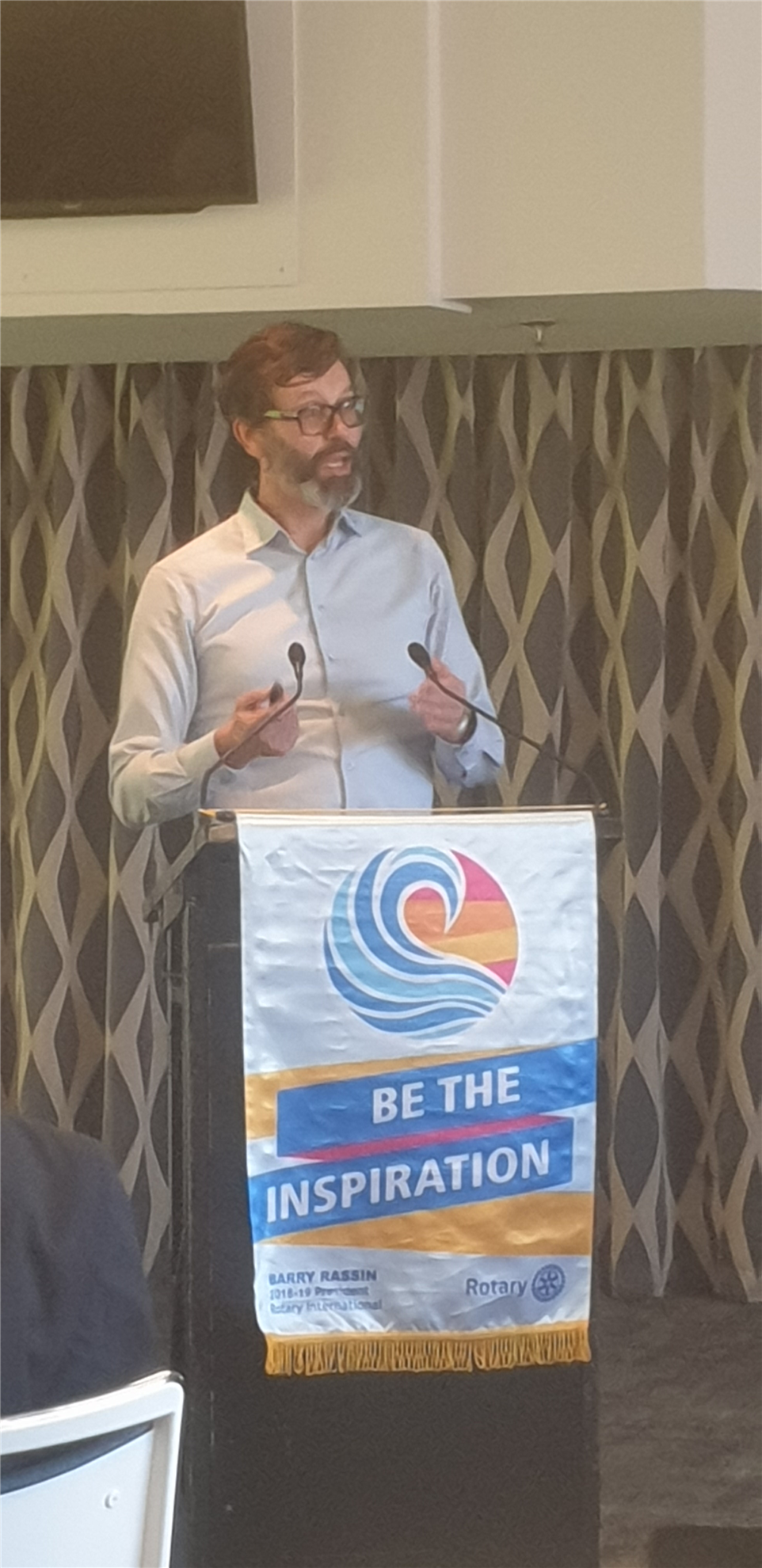
Prof Dakin spoke to us about vision children focusing three projects his school is undertaking ;
Specifically, measuring acuity (vision) in children, the treatment for amblyopia (lazy eye), and developing methods of identifying autism in children so to enable early diagnosis and intervention.
Each of these three projects are fascinating in their own right.
Prof Dakin took us through the methods of eye testing. The method we are all familiar with is the use of charts containing lines of letters that progressively shrink until they cannot be identified by the person whose vision is being tested. The problem is that Whilst these tests may engage adults they do not engage children whose attention span is generally very small. In any event some children cannot recognise letters.
As part of the analysis of testing programs professor Dakin’s team came up with different forms of charts that would enable children to be engaged with process and enable those undertaking eye tests on those children to get a better understanding of the problems the subject child has with his or her vision. An example of the chart is below.
Professor Dakin told us the use of symbols has caused a degree of controversy among those who develop and provide eye testing charts. There are claims of copyright to some of the symbols used by other developers so to deal with these issues Professor Dakin's program has been engaging intellectual property lawyers to protect its own copyright and IP and fend off the claims of others.
The second of the projects that Prof Dakin told us about was one addressing the diagnosis and cure of amblyopia or lazy eye.
This problem is caused by a misalignment or difference between eyes leading the brain to effectively looking through the better eye and ignoring the bad eye. This leads to a spiral of decline in the "bad" eye as the initial problem is magnified over time.
The problem affects one and 30 children in New Zealand so it is relatively common. The general form of treatment is to place a patch over the good eye for a period of time to make the brain use the "bad" eye and hopefully equalise them them up. The problem is this remedy is slow and 50% of cases there is no stereoscopic vision in the end of the treatment, there is very poor compliance especially amongst children.
The method being proposed is to have children watch movies on devices for at least an hour a day using modified glasses to give the bad eye priority. this is because children, especially those of your editor, seem to spend hours on devices every day. As noted with this method the children use shuttered glasses which equalise the screen they see so as to assist the brain equalise the division between the eyes. 
The benefit of this program is that the studies show there is a quicker response time and the process is a whole lot cheaper.
the final project Professor Dakin< and probably the most fascinating, told us about was the use of eye tracking for diagnosis of autism. Autism as members will be aware is a broad range of conditions characterized by challenges with social skills, repetitive behavours, speech and nonverbal communication. It affects about one child in 60 so is relatively common. Early diagnosis of autism leads to better outcomes.
The difficulty is diagnosing Autism. it is difficult as there are no medical tests so Doctors look at the childs behaviour and development to make a diagnosis. So diagnosis is subjective rather than objective.
One of the elements of Autism that is understood is that those who are on the Autism spectrum do not make eye contact with others, whereas those without Autism do. Leaving aside cultural issues where eye contact is not promoted this understanding has lead to the use of eye tracking software to see what children are looking at or not looking at while watching movies on a screen. The pint of the exercise was to see if this would be of assistance in the the diagnosis of autism.
Prof Dakin made the comment that eye tracking devices were incredibly expensive at the outset of the program but as a consequence of the intense interest of corporates involved in the digital world such as Facebook, Google and similar the costs of eye tracking devices and software has significantly declined.
The videos that Dr Dakin to make his point showed us show remarkably clearly that what an autistic child would look at while watching a movie where significantly different to what a non-autistic child would look at in the same movie. The difference to this layman of the difference is quite astonishing.
Dr Doug Prof Dakin made the comment also this is a Cure Kids project, a charity that members will be familiar with.
Prof Dakin is told us of his personal project which is to set up a mobile eye clinic to go around the country testing children for acuity issues such as those mentioned above and pointing them in the right direction for help. This proposal is based on the reality of the cost of optometry which means many of these problems go unnoticed until too late. Professor Dakin estimates the cost of setting up a mobile then would be the acquisition of the vehicle $350,000 to purchase the with the ongoing costs of operation being about $1.2mil per anum to cover the cost of staffing and maintenance.
Professor Dakins address was well received by a good turnout of members.
